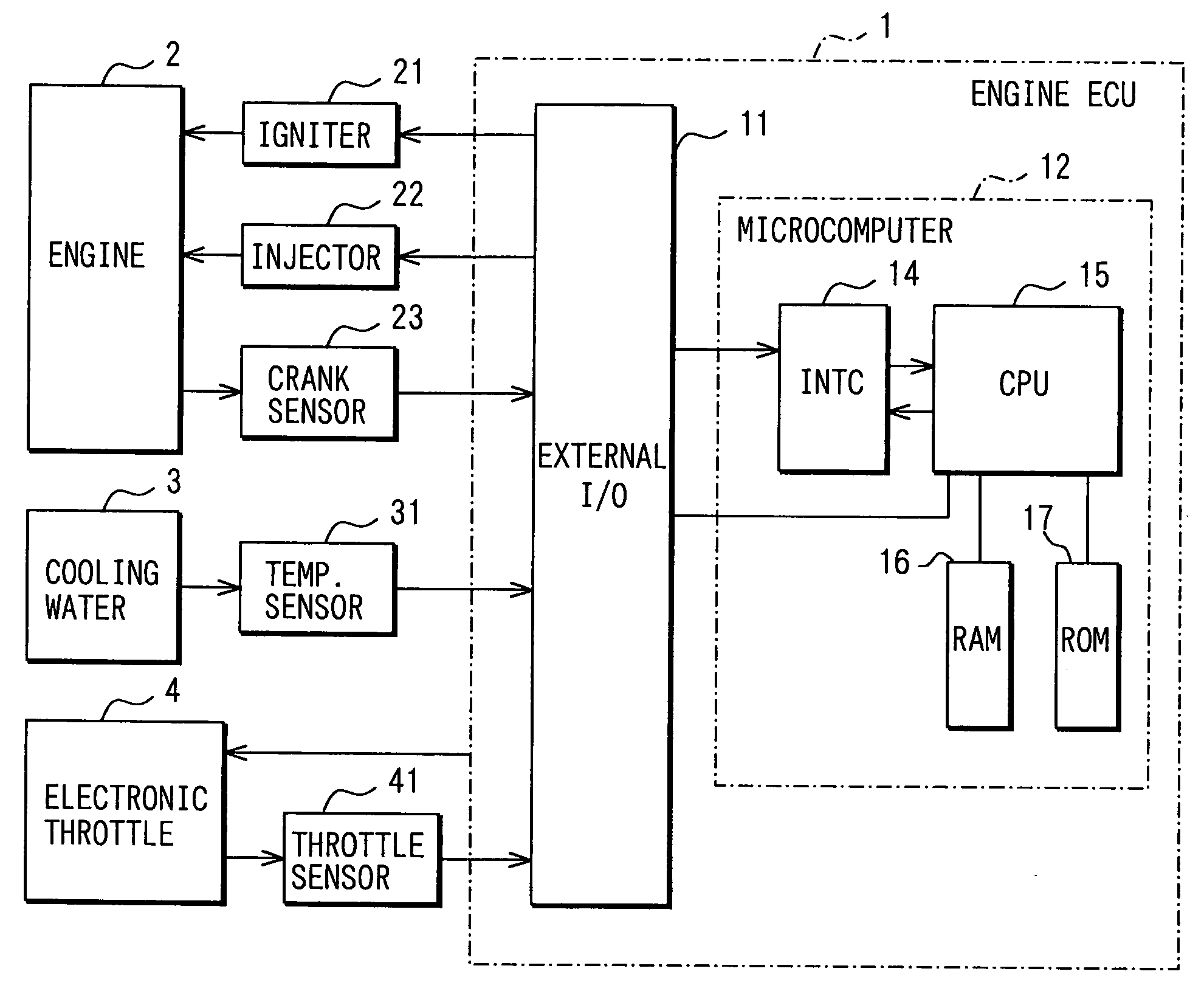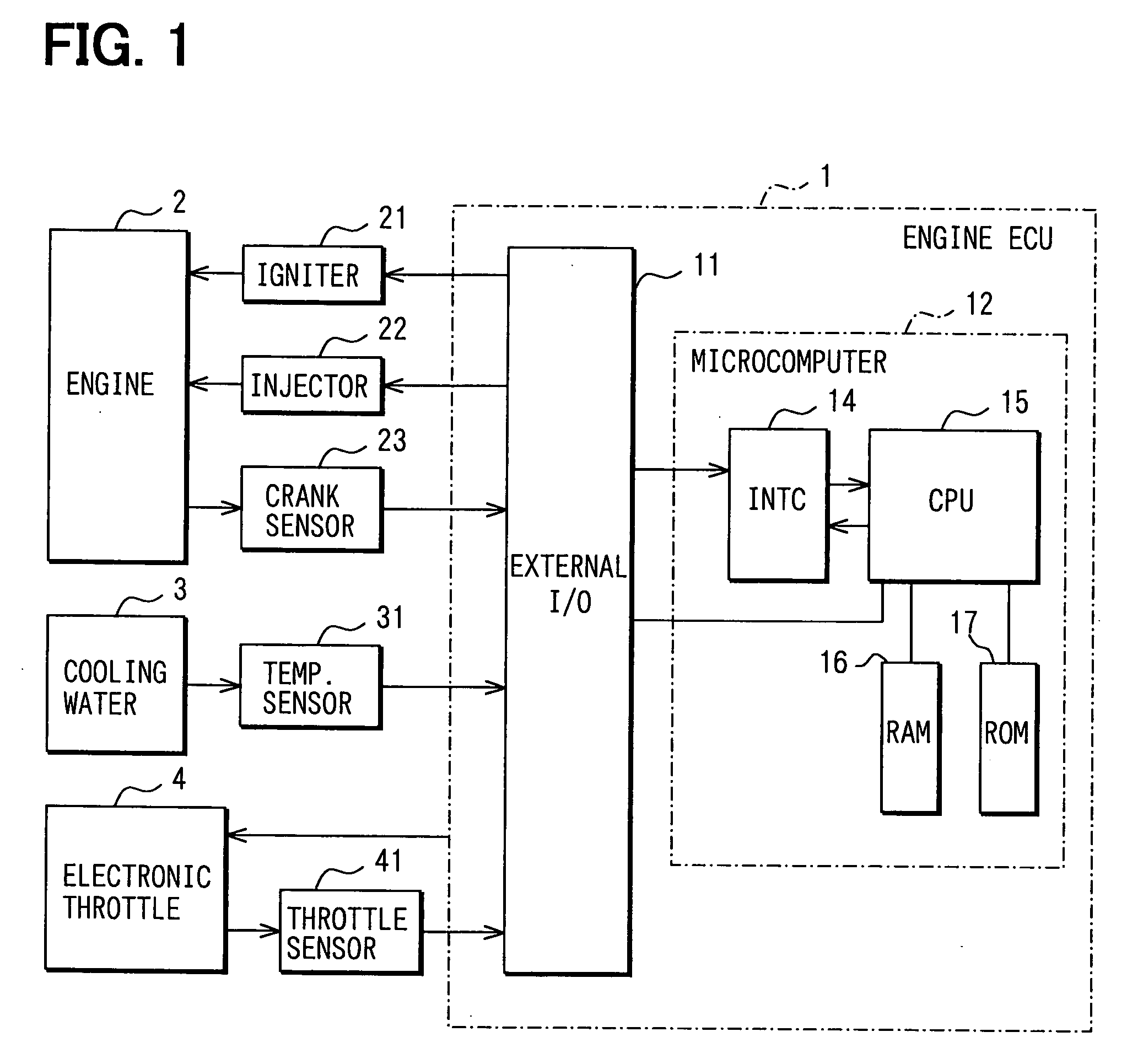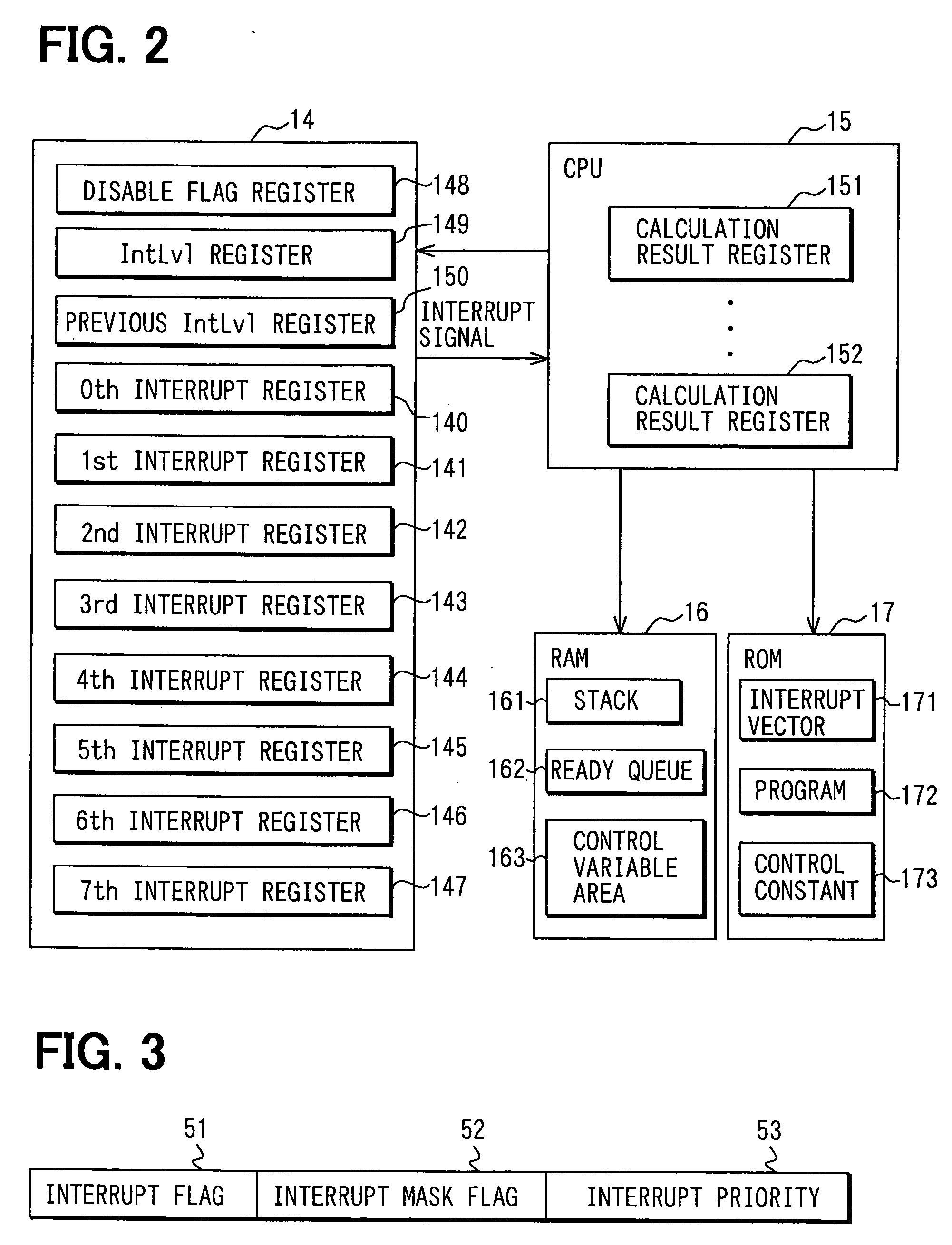Interrupt request program and microcomputer
a request program and request technology, applied in the field of interrupt request program and microcomputer, can solve the problems of limiting the cpu time actually available for task level processes, consuming a large amount of cpu processing time for task scheduling, etc., and achieve the effect of reducing the time consumed for task scheduling
- Summary
- Abstract
- Description
- Claims
- Application Information
AI Technical Summary
Benefits of technology
Problems solved by technology
Method used
Image
Examples
first embodiment
[0033] The following describes a first embodiment of the present invention. FIG. 1 shows the configuration of an engine ECU 1 according to the embodiment. The engine ECU 1 controls an engine 2. The engine ECU 1 is supplied with a pulse signal from a crank sensor 23. This signal notifies that a crank of the engine 2 has reached a specified crank angle. The engine ECU 1 is supplied with information about a temperature of engine cooling water 3 from a water temperature sensor 31. Further, the engine ECU 1 is supplied with information about a throttle angle from a throttle sensor 41. Based on the input information, the engine ECU 1 calculates ignition timing, an injection quantity, a throttle adjustment amount, and the like of the engine 2. Based on calculation results, the engine ECU 1 controls an igniter 21 to ignite fuel, an injector 22 to inject fuel, and an electronic throttle 4.
[0034] For these operations, the engine ECU 1 has an external input / output circuit 11 and a microcomput...
second embodiment
[0147] The following describes a second embodiment of the present invention. The second embodiment differs from the first embodiment in the following. The CPU 15 rewrites the IntLvl register 149 of the interrupt controller 14 so as to artificially increase the priority of the currently executed task level process to a specified priority.
[0148] It may become necessary to artificially increase the priority of the currently executed task level process to a specified priority. For example, task level processes with different priorities are configured to use the same resource of the engine ECU 1. That is, the resource is shared by task level processes with different priorities. The resource of the engine ECU 1 signifies a physical device used by the CPU 15 in the engine ECU 1. The resource includes the RAM 16 of the microcomputer 12, a specified area in EEPROM (not shown), the external input / output circuit 11, and a communication device to communicate with another ECU in a vehicle (not ...
third embodiment
[0165] The following describes a third embodiment of the present invention. The following description covers only a difference in the third embodiment from the second embodiment. According to the third embodiment like the second embodiment, the OSEK-OS provides the resource acquisition program and the resource release program as interfaces to artificially increase the priority of the currently executed task level process to a specified priority.
[0166] However, the resource acquisition program according to the third embodiment differs from that according to the second embodiment in the following. The resource acquisition program enables an exclusive use of the resource by rewriting a value of the interrupt priority 53 for the interrupt register in the interrupt controller 14 to a priority lower than or equal to the priority of the currently executed task level process.
[0167] Under rewrite control of the CPU 15, the interrupt controller 14 according to the embodiment rewrites values...
PUM
 Login to View More
Login to View More Abstract
Description
Claims
Application Information
 Login to View More
Login to View More - R&D
- Intellectual Property
- Life Sciences
- Materials
- Tech Scout
- Unparalleled Data Quality
- Higher Quality Content
- 60% Fewer Hallucinations
Browse by: Latest US Patents, China's latest patents, Technical Efficacy Thesaurus, Application Domain, Technology Topic, Popular Technical Reports.
© 2025 PatSnap. All rights reserved.Legal|Privacy policy|Modern Slavery Act Transparency Statement|Sitemap|About US| Contact US: help@patsnap.com



